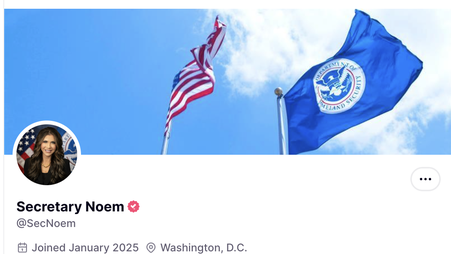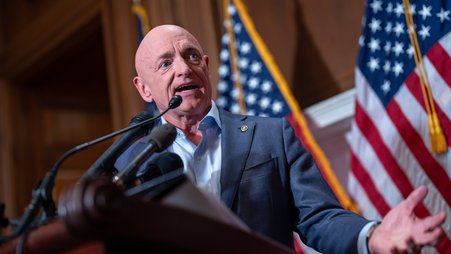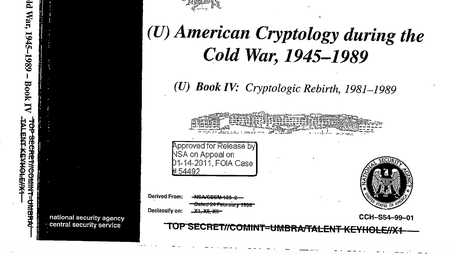Dear Friend of Press Freedom,
I’m Lauren Harper, the first Daniel Ellsberg chair on government secrecy at Freedom of the Press Foundation (FPF), and welcome to “The Classifieds.” Read on to learn more about obtaining body-worn camera footage from the LA protests and more of this week’s top secrecy news.
The agencies policing the LA immigration protests and how you can request their body camera footage
There have been multiple accounts of violence by law enforcement against protesters and the press during the immigration-related protests in Los Angeles, and the public has a right to know which agencies are using excessive force and violating First Amendment rights. This makes public records requests for body-worn camera footage critical.
The first step is knowing which agencies to send requests to. Luckily, The New York Times has identified ten California law enforcement agencies policing the protests. They are:
- The Los Angeles Police Department
- The Santa Ana Police Department
- The Pasadena Police Department
- The Monterey Police Department
- The Los Angeles County Sheriff’s Department
- The Orange County Sheriff’s Department
- The Santa Barbara Sheriff’s Department
- The Ventura Sheriff’s Department
- The San Bernardino Sheriff’s Department
- The California Highway Patrol
Both the California Public Records Act and the California Penal Code govern how these agencies handle body cameras. All police departments in California are equipped with bodycams that must be activated during public interactions, and footage of “critical incidents,” including police use of force resulting in bodily injury, is subject to California public records requests.
While current exemptions for police video footage are expansive, a June 2025 California appellate court ruling added more teeth to the disclosure requirements, underscoring “the CPRA’s constitutional foundation and its strong presumption in favor of disclosure.”
For more resources on access to police records in California, including video footage, check out Reporters Committee for Freedom of the Press’s open government guide.
Read the guideFederal agencies and bodycams
There are a handful of federal agencies involved in the LA protests and raids. Unfortunately, President Donald Trump rescinded an executive order signed by President Joe Biden requiring federal law enforcement agencies to use bodycams. The Drug Enforcement Administration has quietly scrapped its program as a result, and others may follow. Unsurprisingly, federal agency policies around body cameras vary widely, if they exist at all.
The Department of Homeland Security, the parent agency of Immigration and Customs Enforcement, has a department-wide guide policy on body cameras. Notably, the cameras are not to be used for the sole purpose of recording individuals engaged in First Amendment activity.”
An ICE-specific “policy calls for the use of BWCs in all aspects of ICE enforcement activities conducted by ICE personnel in furtherance of the ICE mission.” And while ICE does not currently provide cameras to all personnel, it has prioritized cameras for the Enforcement and Removal Office, whose officers have been identified at the immigration raids that sparked the protest.
Both the Marines and the National Guard have also been ordered to police the protests. These agencies fall under the Defense Department, which does not have a department-wide policy on bodycams.
Disclosure of federal body camera footage is governed by the federal Freedom of Information Act. Requesters are allowed to ask for disclosure but should be prepared to fight extensive federal law enforcement redactions. Here are some good strategies for doing that.
Read MoreCongratulations, your FOIA was granted expedited processing. Now wait 620 days.
On May 15, 2025, I filed a FOIA request with the Office of the Attorney General for the memo Attorney General Pam Bondi sent to the White House Counsel’s Office concluding that the Trump administration’s acceptance of a $400 million plane from Qatar is “legally permissible.”
I was quickly granted expedited processing, but the Justice Department soon went quiet. So, I asked for an estimated date of completion for my request. I was told that the search was still ongoing and, according to current estimates, it would take 620 days for them to respond. In other words, I wouldn’t get a response to my expedited FOIA request until January 2027.
This might not be the FOIA office’s fault. They likely had to task this request out to another component of the bureau that does not want to release the document, even though a successful search would be very quick. One common-sense way to make FOIA more efficient would be to grant apolitical FOIA offices access to all agency records and allow FOIA officers to conduct the searches themselves.
Explore our foia coverageUpcoming FPF FOIA event
Please join us for “Using public records to fight government secrecy and improve communities,” a virtual webinar event with FPF on Tuesday, June 24. I’ll be moderating a panel with The Washington Post’s Nate Jones, MuckRock’s Michael Morisy, and journalist and author Miranda Spivack to discuss how the public can use public records requests to fight back against mounting secrecy. Register here, and we hope to see you there.
Register hereTransparently yours,
Lauren Harper
Daniel Ellsberg Chair on Government Secrecy
Freedom of the Press Foundation





